- Art
- Bars and Nightlife
- Buffalo Architecture
- Family Fun
- Food & Drink
- Gardens
- History
- Outdoor Recreation
- Performing Arts
- Shopping in Buffalo
Why I Love Elmwood Village
I like to pretend the poet e.e. cummings may have been inspired by Buffalo’s own Elmwood Village when he wrote of “the leaping greenly spirits of trees”.
I do believe anyone with a poetic sensibility, not to mention a taste for the convenience and variety of modern urban life, will surely love Elmwood Village as I do. Let me enumerate the ways.
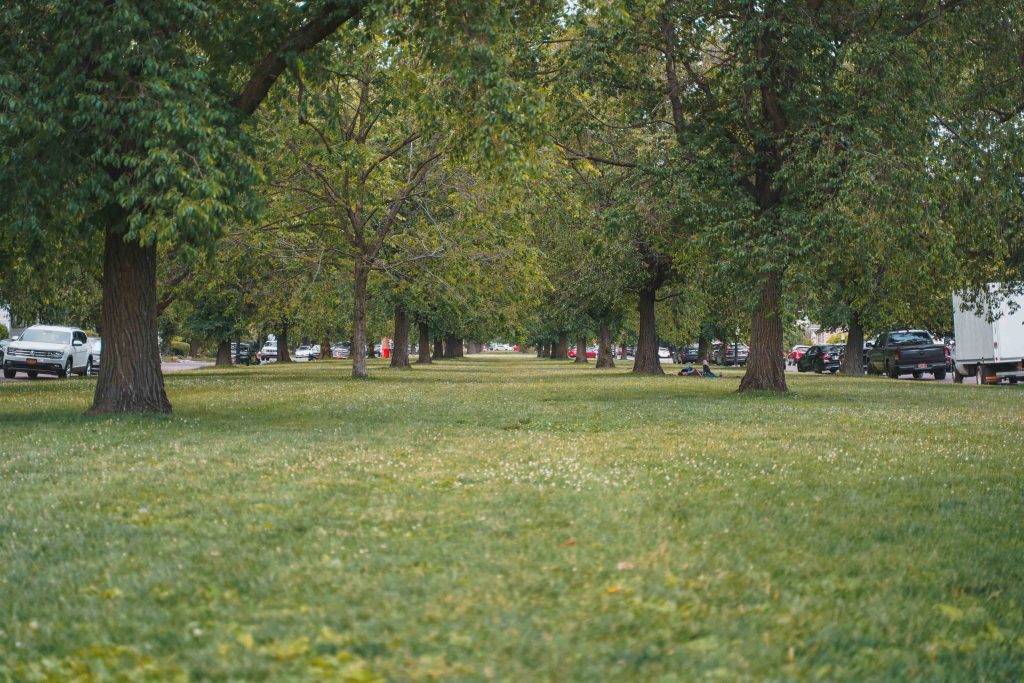
The tree-lined Bidwell Parkway
Walking through the complete city experience of this neighborhood—where you can order a pizza, get a haircut, try on a dress, drop off drycleanables, buy a book or borrow one, join a protest, purchase a new pair of shoes and/or get your old ones repaired, fix that bike, taste-test sponge candy, shop for gifts crafted by local artists, and savor a beer—you may also find yourself waxing lyrical at its abundant natural beauty.
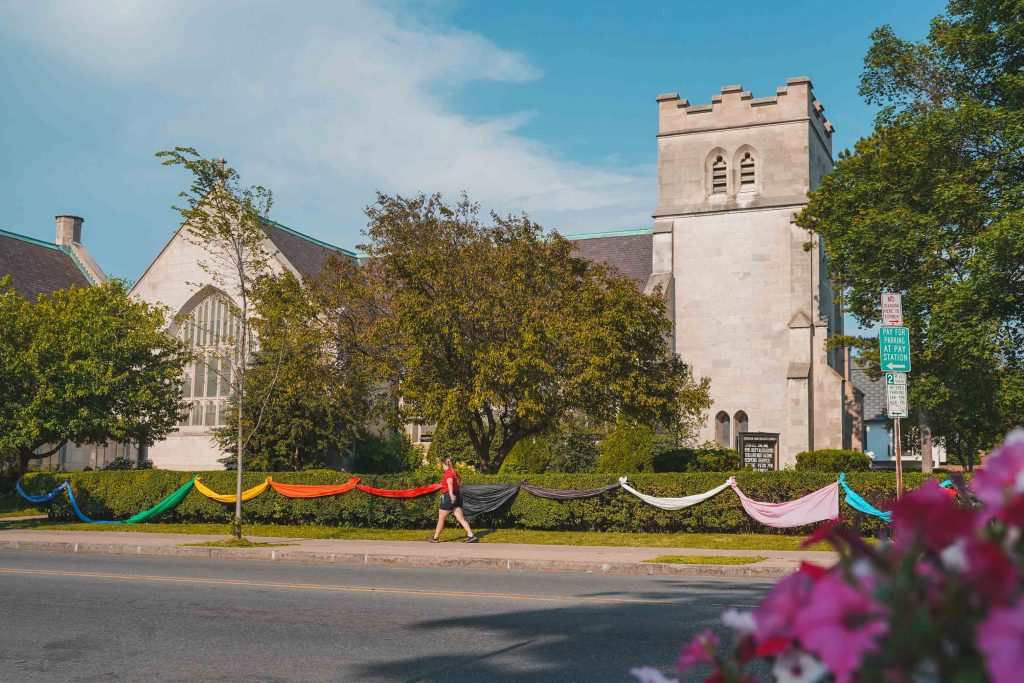
Unitarian Universalist Church
Daffodils dip their heads in shy greeting when you walk through the “bee-friendly garden” in front of the stately Unitarian Universalist Church at Elmwood and West Ferry. Oak, maple, chestnut, London plane, gingko, sycamore, and locust are among the many trees whose branches—bare black sculptures in winter and verdant shades in summer— frame the streetscape.
Urban variety wildlife thrives here. Squirrels nest high in the trees, dashing about on their own secret stockpiling missions. Cool cats wouldn’t deign to do so, but dogs beg for attention outside the pet and people-friendly Elmwood Pet Supplies, 706 Elmwood. Birds sing and soar in this ornithologist’s playground. Uniformly-attired private school-kids gather at Spot Coffee, 765 Elmwood, or Caffe Aroma, 957 Elmwood, to sit outside in clement weather and mass-ritually check their phones.
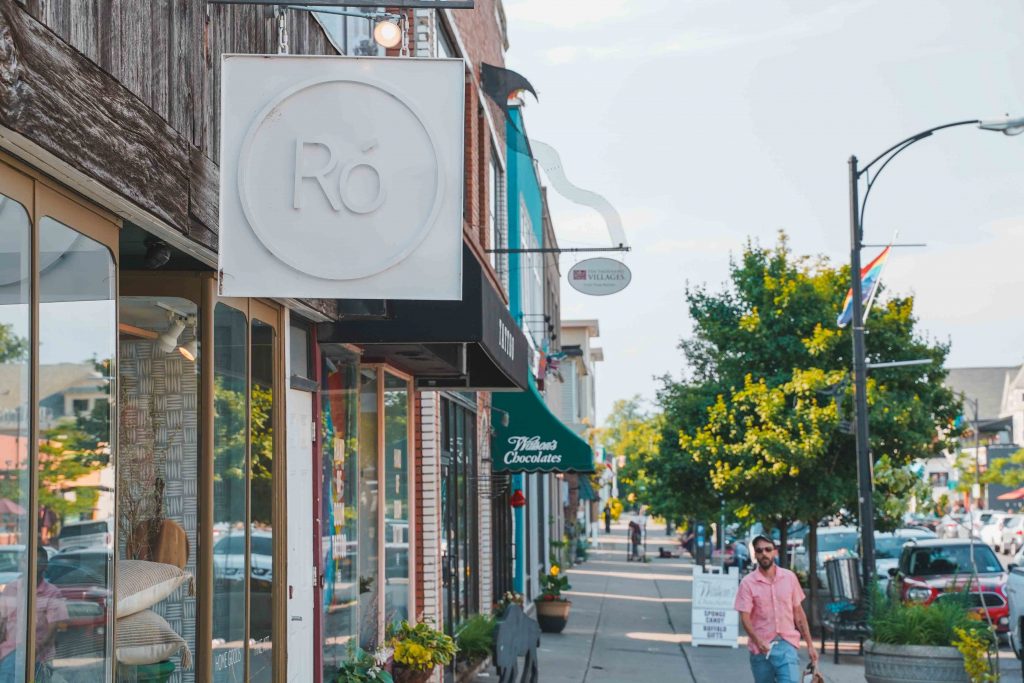
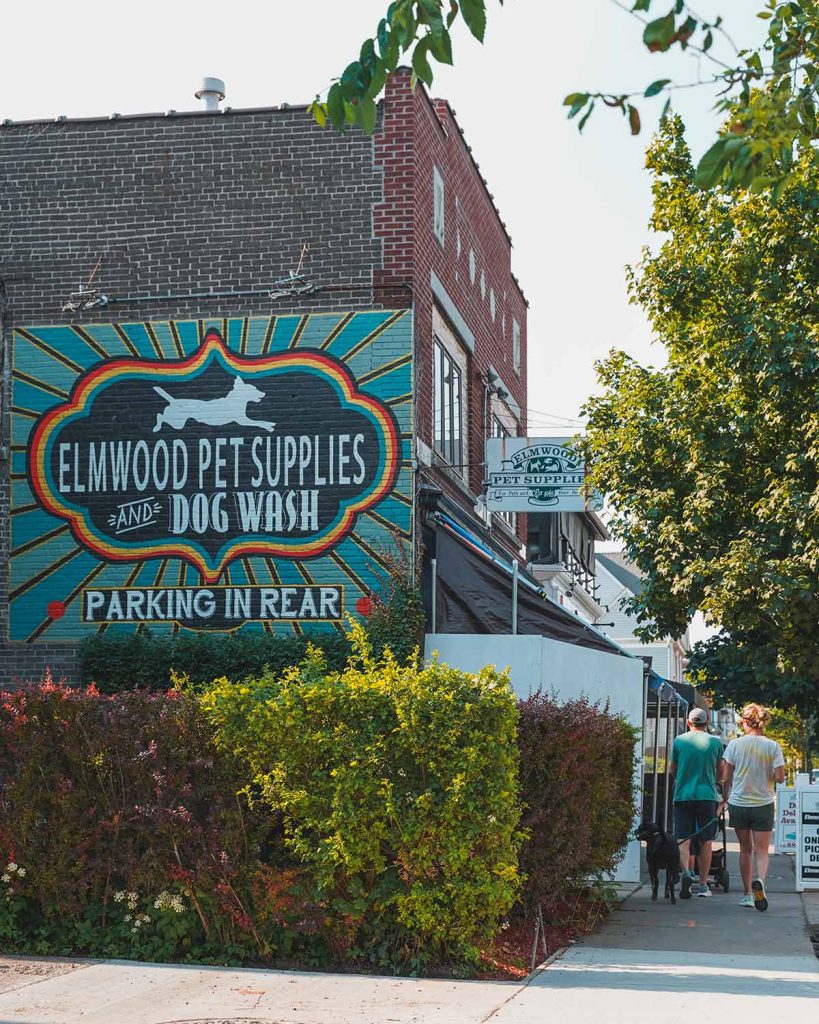
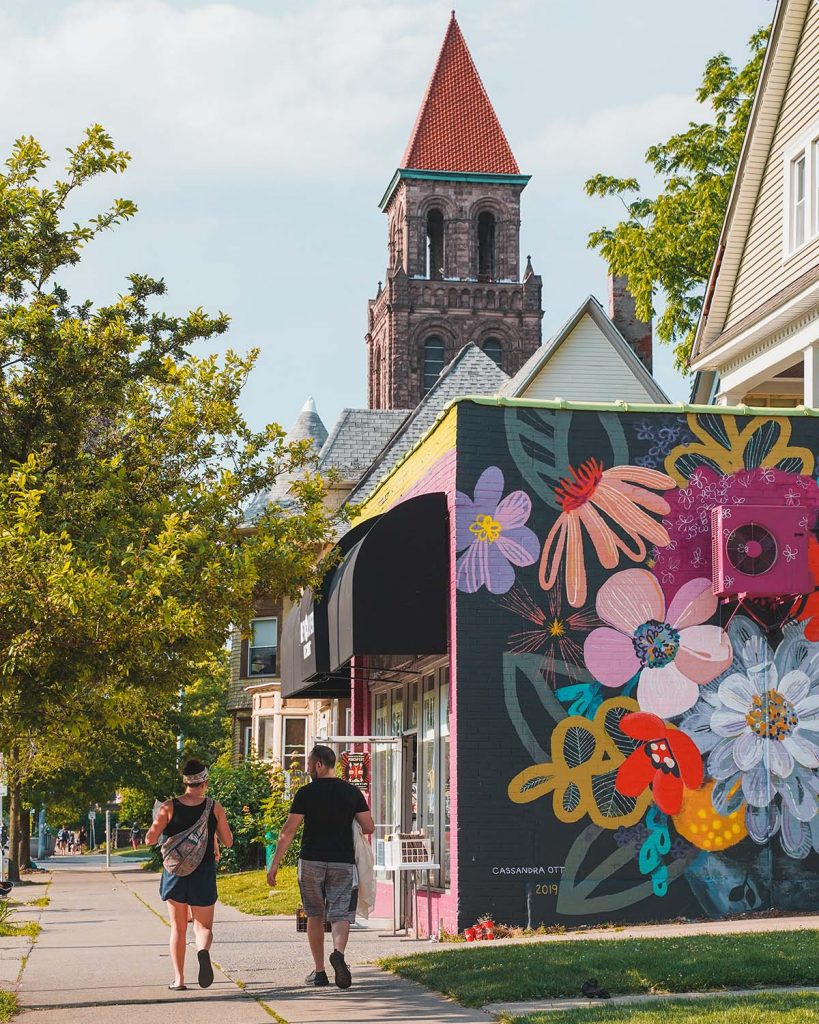
Pedestrians of all ages, sizes, skin color, and manner of clothing, a testament to the diversity of Buffalo in 2021, steer clear of bicyclists, and motorists slowly circling in search of parking spots. A young mother pushes a napping toddler in a stroller, its baby sibling strapped to her chest. A man in a motorized wheelchair eats a cup of ice cream from Barney’s Ice Cream, 754 Elmwood. Down the same block, another Buffalo icon, Watson’s Chocolates,738 Elmwood, is a busy competitor. Can there ever be too much ice cream on offer?
Or books? They are on loan at the Crane Branch Library, 633 Elmwood, a venerable neighborhood bastion of intellectual and leisure pursuit. Stroll down the avenue and visit Buffalo’s most comprehensive independent bookstore, the much beloved Talking Leaves, 951 Elmwood at the corner of Bidwell Parkway, a literal village green. With a farmers market through summer and fall, it is an event space and gathering spot for all manner of civic and cultural demonstrations.
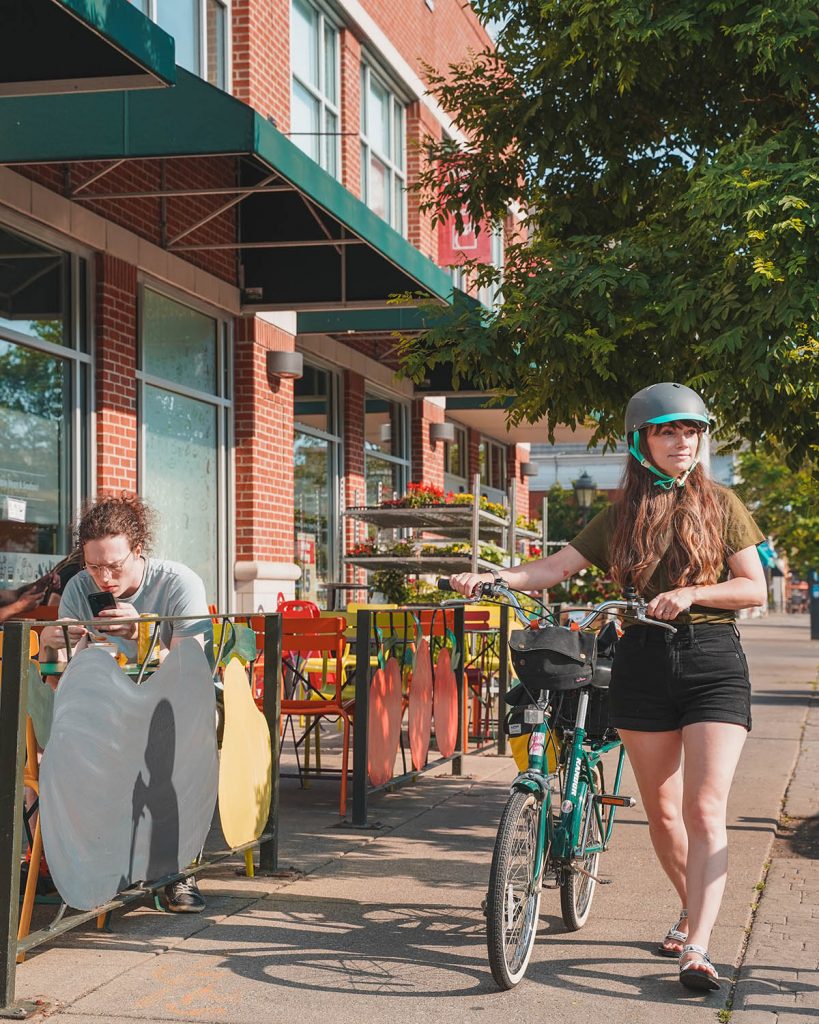


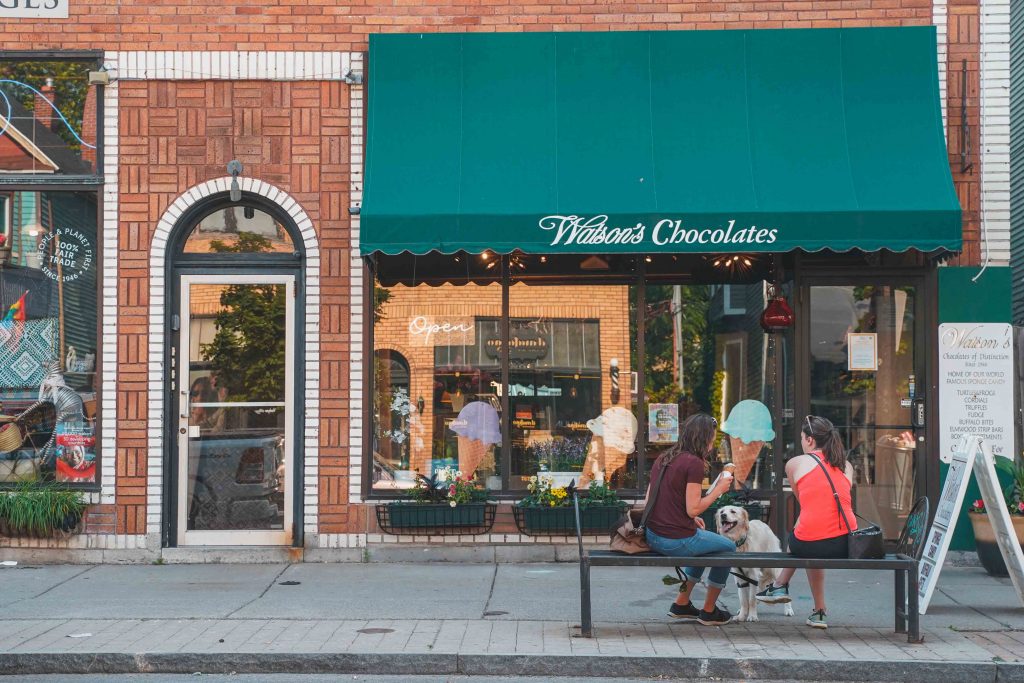
Step off the main drag for an impromptu exploration of the glories of Buffalo’s storied housing stock. Lafayette Avenue leads into Richmond Avenue, two broad boulevards where grander houses mingle with modest frame bungalows at the edge of the city’s reviving West Side.
A stroll down smaller side streets, extending eastward to Main, is replete with its own visual delights. On Linwood Avenue see multiple displays of building renewal, and trees beginning to renew old-timers’ memories of the cathedral of elms that once arched over this lovely street. The newer leafy denizens are not touching treetops yet, but they are getting there.
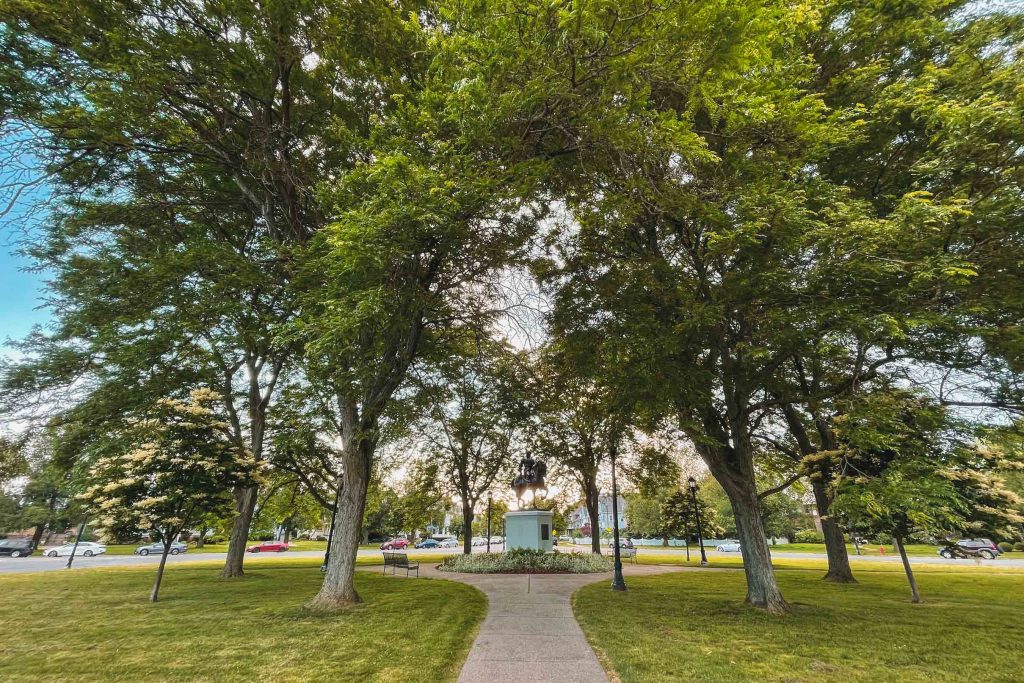
Colonial Circle – where Lafayette and Richmond Avenues meet
Many of the big old homes are multi-unit dwellings now, and there are new builds tucked in among the stately edifices of years gone by. Stop in front of one of Buffalo’s first high-rises, circa 1929, the elegant 800 West Ferry, whose wings open like a beautiful old book. The faces of its watchful gargoyles are reputedly modeled on the features of the building’s developer, Darwin R. Martin, son of the Buffalo businessman who commissioned the world-famous Frank Lloyd Wright-designed Martin House, which can be found across town in the city’s Parkside neighborhood.
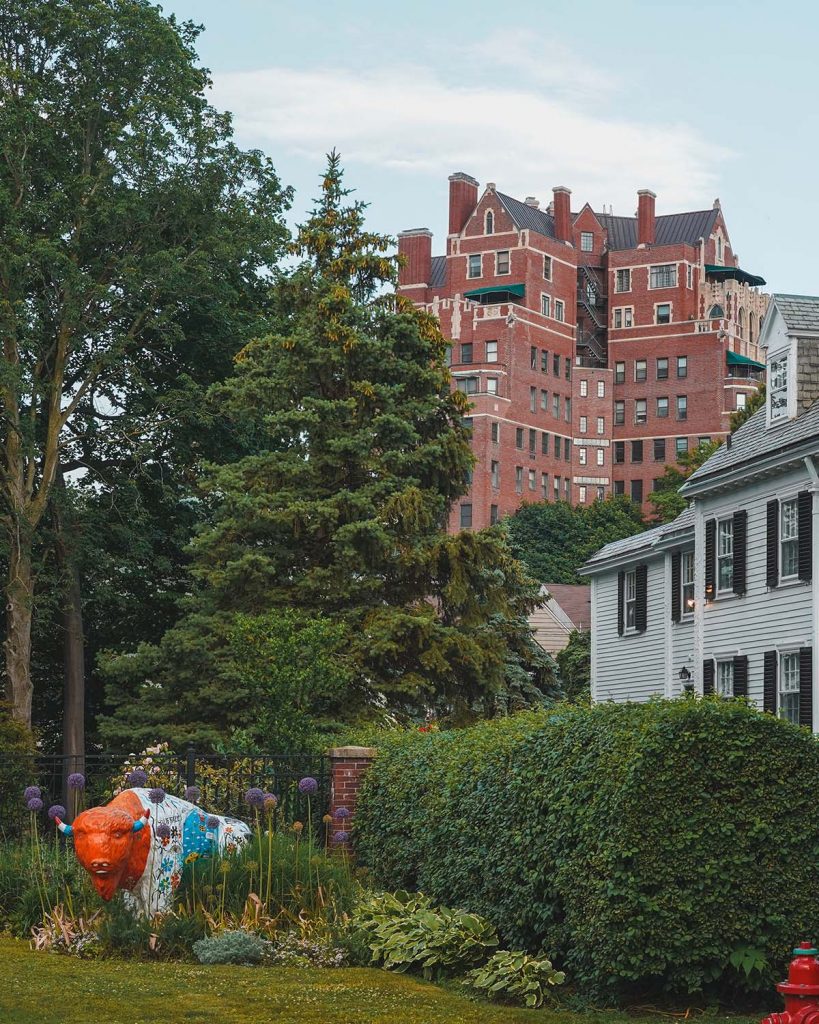
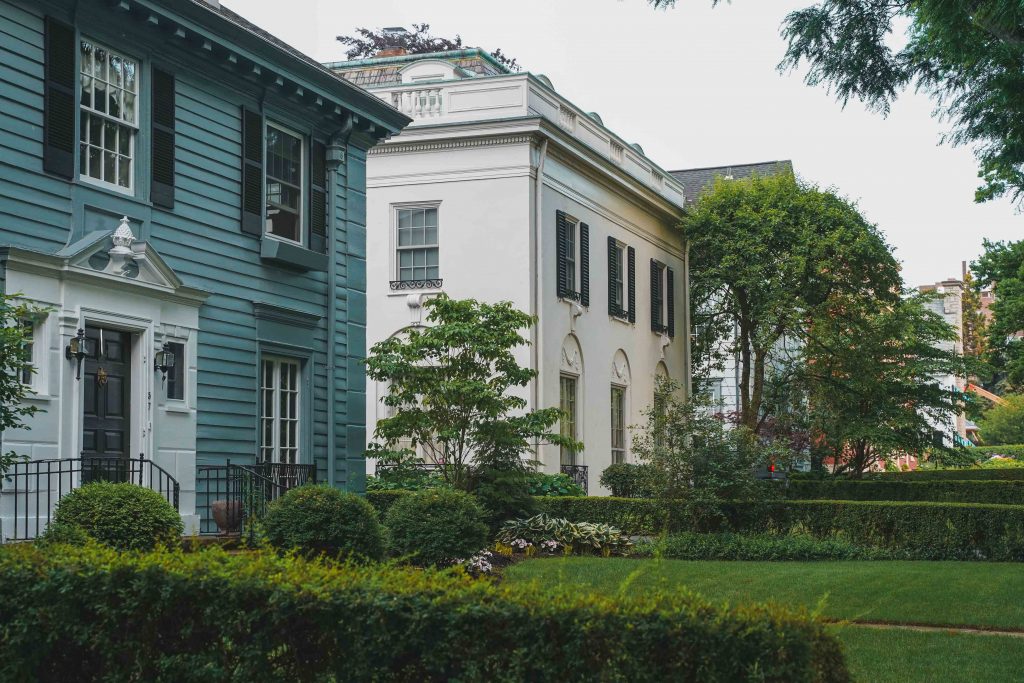
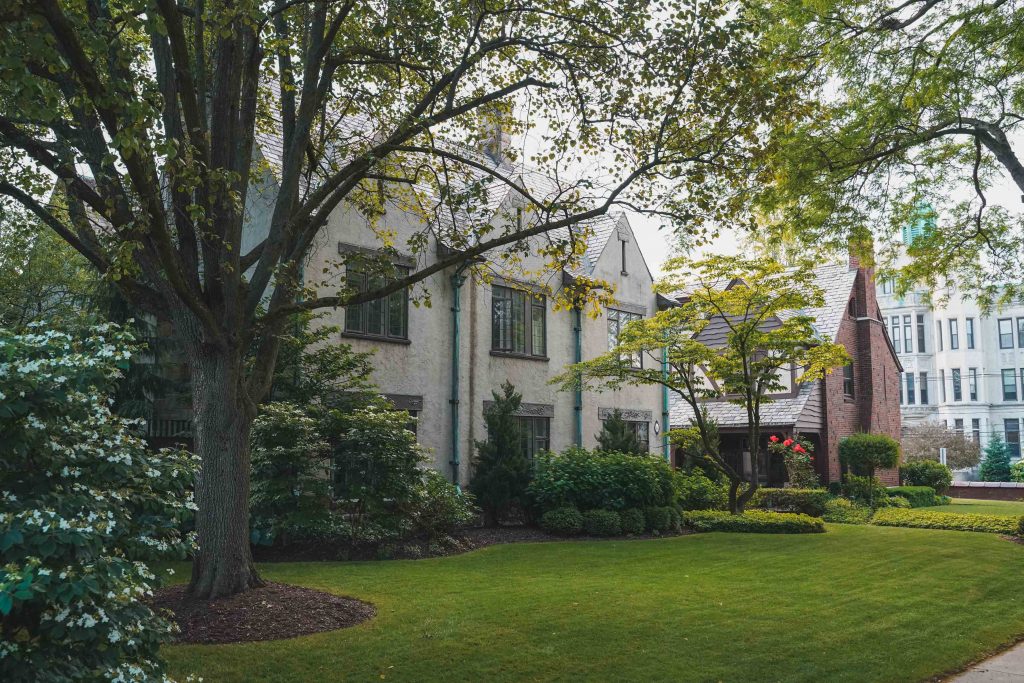
800 West Ferry and the homes of Tudor Place
Walk around the corner to Tudor Place, where mansions look like stage sets, in a time that doesn’t exist anymore, except that it does. At 64 Tudor Place, corner of Cleveland Avenue, sits the home designed and once resided in by architect Louis Greenstein. Greenstein’s rendering of 13 “radical electrical flashes” — symbolic of Niagara’s electrical power and typifying Buffalo’s energy and zeal — was chosen in 1924 as our official municipal flag in a citywide competition. In a city bursting with civic pride, you’ll still see it waving from Elmwood Village porches.
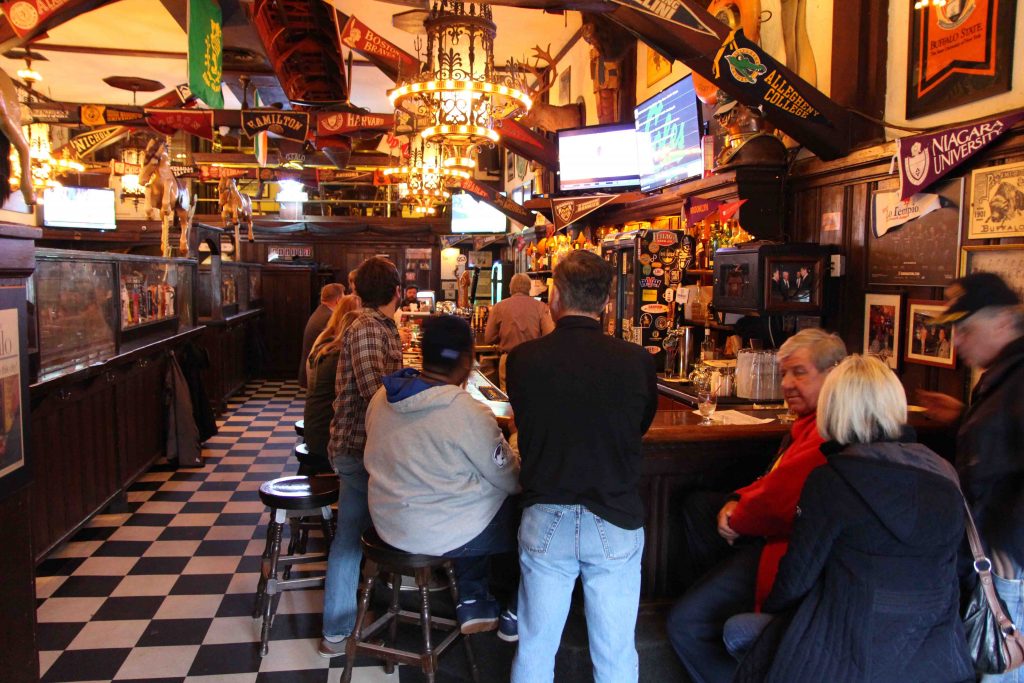
Cole’s on Elmwood
Getting thirsty? Consider heading down the Village’s main drag to Cole’s, 1104 Elmwood, one of Buffalo’s oldest and best bars. The parameters of Elmwood Village extend north to Forest Avenue, just before you reach our own museum row, and parts of the Frederick Law Olmsted-designed parkway system. Here is the campus of Buffalo State University with its Burchfield Penney Art Center, 1300 Elmwood; across the street from the Buffalo AKG Art Museum, 1285 Elmwood, and The Buffalo History Museum, 1 Museum Court, at Elmwood and Nottingham Terrace.
The southern border of Elmwood Village stops at Summer Street—just about where Allentown begins, leading into downtown Buffalo, with the art deco masterpiece of City Hall dominating the skyline. I love that neighborhood, too, but that’s another story.
